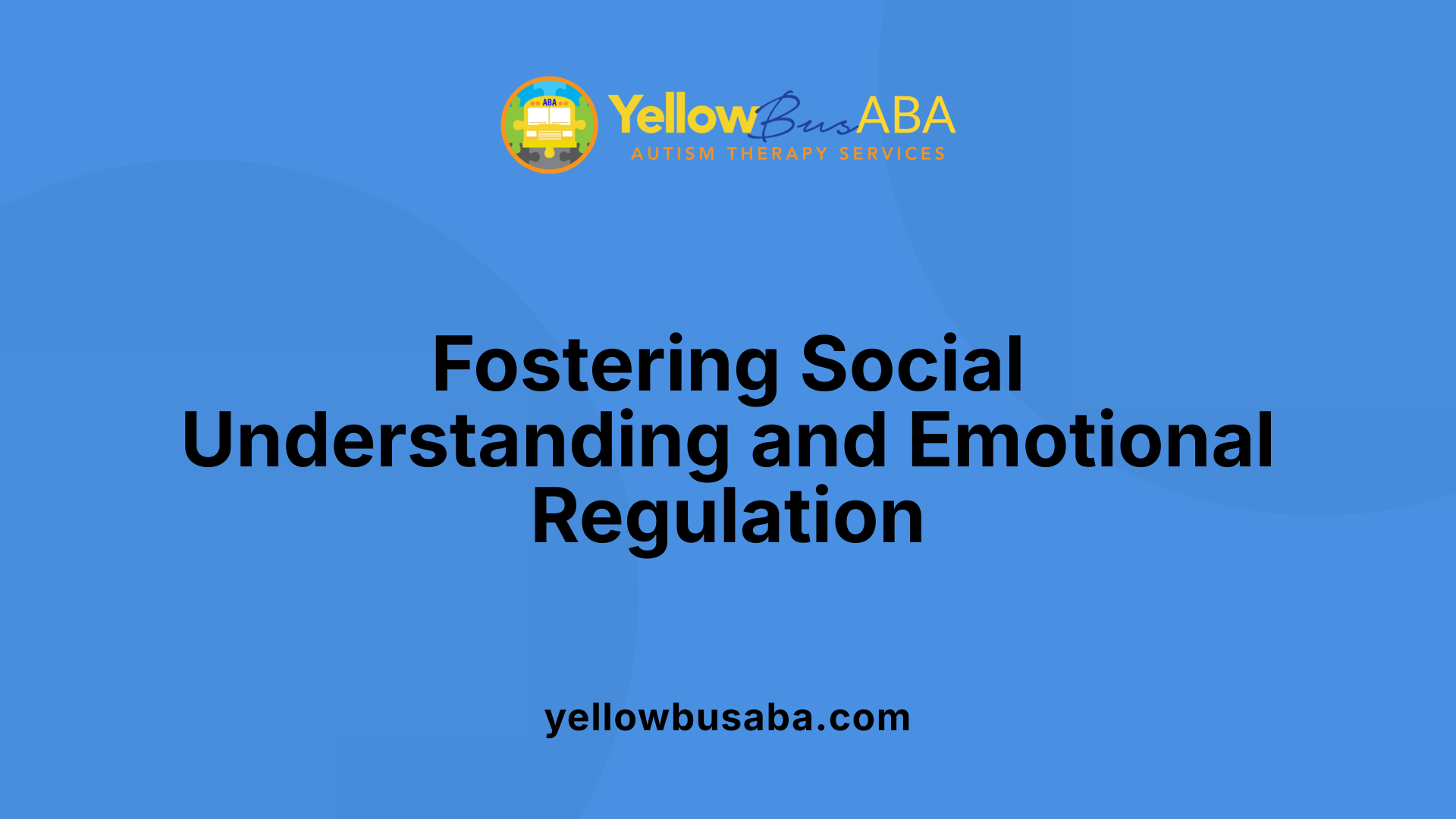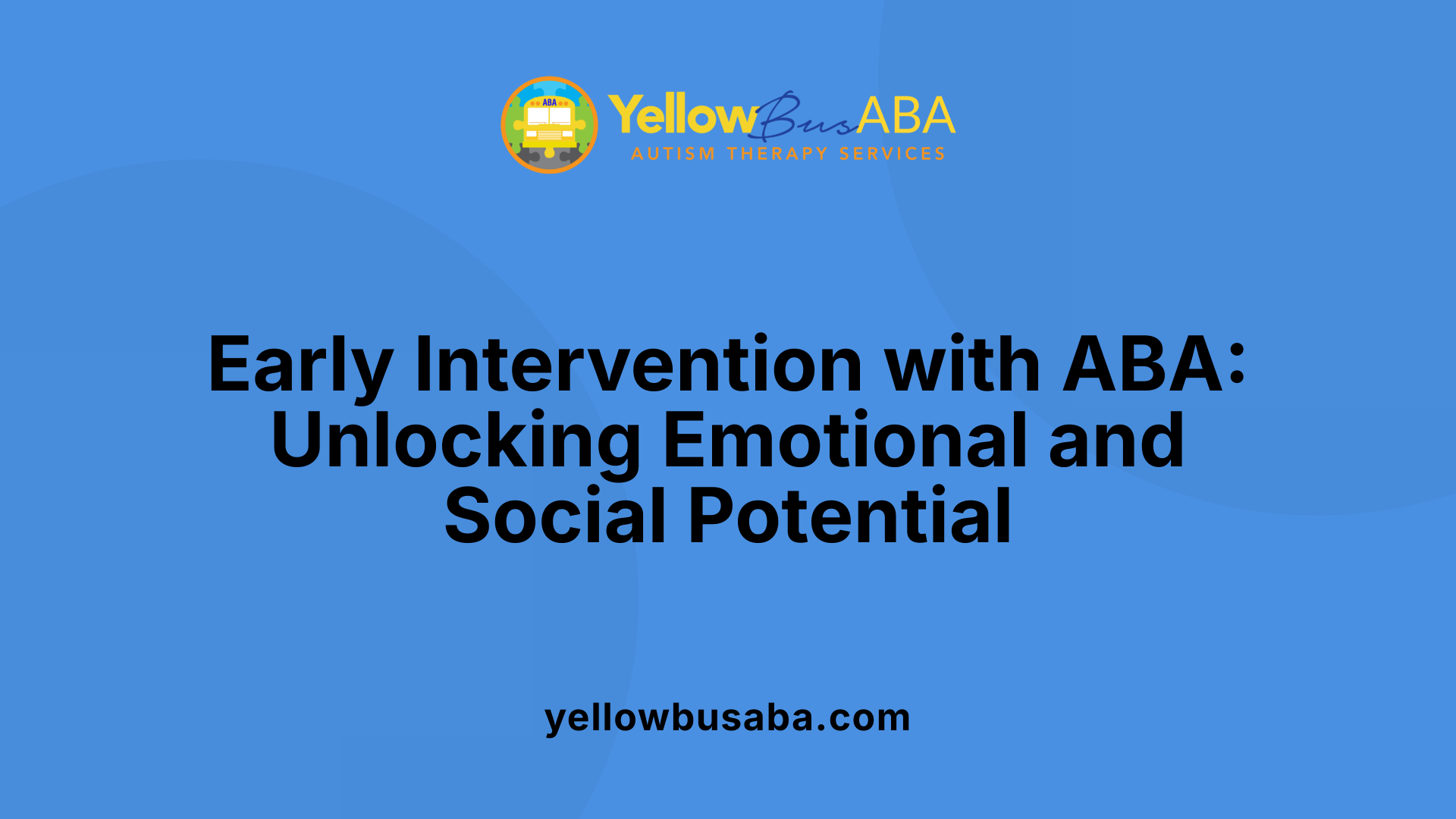The Role of ABA Therapy in Supporting Emotional Growth for Children with ASD
October 3, 2025
Unlocking Emotional Resilience in Children with ASD Through ABA Therapy

Understanding ABA Therapy’s Impact on Emotional Development in Autism
Autism Spectrum Disorder (ASD) presents unique challenges in emotional regulation and social communication. Applied Behavior Analysis (ABA) therapy is widely recognized as an evidence-based approach that promotes emotional growth and behavioral skills in children with ASD. This article explores how ABA supports emotional development, improves coping strategies, and fosters independence, ultimately enhancing quality of life for children and their families.
The Core Principles of ABA and Its Focus on Emotional Growth

What is the role of ABA therapy in promoting emotional growth among children with autism spectrum disorder?
Applied Behavior Analysis (ABA) therapy is centered on helping children with autism develop essential emotional and social skills. It provides personalized support by focusing on each child's strengths and specific challenges, whether they relate to communication, social interaction, or emotional regulation.
ABA uses evidence-based techniques such as reinforcement and structured practice to encourage positive behaviors and help children learn to manage their feelings better. For example, children are taught to recognize and soothe emotions like frustration or anger through visual tools, calming strategies, and modeling behavior.
Reinforcement plays a vital role in encouraging children to try new social behaviors, such as taking turns, sharing, or making eye contact. These skills promote emotional growth by building confidence and fostering a sense of safety and competence.
Furthermore, ABA therapy supports children in understanding social cues and emotional states in others, which is crucial for developing empathy and healthy relationships. This is especially beneficial for children with behavioral profiles like Pathological Demand Avoidance (PDA), where motivation and collaboration are emphasized.
Overall, ABA's structured, tailored approach not only enhances behavioral skills but also nurtures emotional well-being, empowering children with autism to better understand and regulate their emotions, leading to greater independence and life satisfaction.
Enhancing Emotional Awareness and Regulation Skills

What are the benefits of ABA therapy for emotional development in children with ASD?
ABA therapy plays an important role in fostering emotional growth in children with Autism Spectrum Disorder (ASD). It helps children recognize and understand their own emotions, as well as the feelings of others. Through structured strategies like visual supports, social stories, and role-playing, children learn to identify emotions such as frustration, anger, or happiness.
This approach also emphasizes teaching calming strategies and coping tools that children can use when experiencing strong emotions. For example, visual aids like emotion charts or calming visual tools help children label their feelings and apply appropriate responses.
Early, intensive ABA intervention supports emotional regulation by reinforcing skills through repetition and positive reinforcement. These methods encourage children to practice emotional self-awareness consistently, across different environments like home or school.
The overall goal of ABA in emotional development is to build resilience and social competence. Children become better at managing their feelings, which improves peer interactions and reduces behavioral issues. This foundation not only enhances immediate social functioning but also contributes to lifelong emotional health.
By applying these evidence-based techniques, ABA helps children develop a more nuanced understanding of emotions, leading to greater independence, improved relationships, and a more positive outlook in everyday life.
Teaching Social Skills and Recognizing Social Cues

How does ABA therapy support emotional growth and regulation in children with ASD?
ABA therapy plays a crucial role in helping children with autism spectrum disorder (ASD) develop emotional understanding and regulation skills. One of the primary methods involves teaching children to recognize and interpret their own emotions and those of others. Visual aids like emotion level charts help children identify feelings such as frustration, anger, happiness, or sadness.
Using structured interventions, therapists introduce individualized coping strategies. These might include deep breathing exercises, sensory calming techniques, or positive self-talk to manage overwhelming feelings. Reinforcement techniques encourage children to practice these skills consistently, gradually building their emotional resilience.
Caregivers are actively involved in the process. Therapists teach parents and family members how to model emotional regulation strategies, providing a consistent experience across home and community settings. This ongoing practice helps children learn to self-soothe, recognize emotional triggers, and implement calm-down routines when needed.
ABA also addresses challenging behaviors like tantrums or aggression by uncovering their underlying emotional or sensory causes. Teaching alternative responses ensures that children can express their needs safely and appropriately.
Overall, ABA supports emotional growth by fostering skills that enable children to manage their feelings effectively, promoting independence and reducing stress for both children and their families.
Behavioral Interventions to Reduce Challenging Behaviors

How does ABA therapy contribute to behavioral and emotional development in children with ASD?
ABA therapy plays a vital role in helping children with autism spectrum disorder (ASD) improve their behavior and emotional well-being. It focuses on teaching children how to respond appropriately in various situations by breaking down complex behaviors into manageable steps. Therapists identify the triggers and purposes behind behaviors such as tantrums or aggression through functional assessments.
Using this information, they develop behavior intervention plans that teach children healthier ways to express themselves and handle their emotions. Positive reinforcement — rewarding desirable behaviors — encourages children to repeat those actions, fostering emotional regulation and social skills.
Research shows that early and intensive ABA therapy can lead to significant improvements in language, social interactions, and daily functioning. It helps children recognize and manage emotions like frustration or anger, reducing challenging behaviors over time. Additionally, involving parents and caregivers in training ensures that these behavioral strategies are reinforced at home and in different environments.
Overall, ABA’s structured approach not only diminishes problematic behaviors but also promotes independence, emotional resilience, and better quality of life for children with ASD.
Building Independence Through Daily Routines and Skills

What is the role of ABA therapy in promoting emotional growth among children with ASD?
ABA therapy significantly contributes to the emotional development of children with autism spectrum disorder (ASD). This approach offers personalized strategies that address each child's unique social, sensory, and behavioral needs.
By focusing on improving communication skills and fostering social interactions, ABA helps children better understand and express their emotions. Techniques such as positive reinforcement and structured learning environments promote emotional regulation, motivation, and flexibility.
Children learn to identify and manage emotions like frustration and anger through visual tools, modeling, and calming strategies. ABA therapy also adapts to specific behavioral profiles, including Pathological Demand Avoidance (PDA), by emphasizing motivation and cooperation instead of strict directives.
Overall, ABA's targeted and compassionate methods support not just behavioral improvements but also emotional well-being. As children develop greater emotional awareness and regulation, they gain skills that help them navigate daily life with increased confidence and resilience.
The Evidence Supporting Early and Intensive ABA Interventions
 Research consistently demonstrates that ABA therapy is an effective approach for helping children with autism develop a wide range of skills and reduce challenging behaviors.
Research consistently demonstrates that ABA therapy is an effective approach for helping children with autism develop a wide range of skills and reduce challenging behaviors.
Early intervention with ABA, especially when it involves more than 25 hours per week, has shown to produce significant improvements in language, cognitive abilities, and social skills. The earlier children begin therapy, the more substantial the long-term benefits, including better communication and increased independence.
Studies indicate that ABA helps children overcome language delays common among autistic children, with estimates suggesting 40% to 70% experience language impairments. Through techniques like picture exchange, verbal imitation, and natural environment teaching, children learn to express needs and understand others more clearly.
In addition to communication, ABA improves social skills such as making eye contact, sharing, taking turns, and understanding social cues. It also addresses challenging behaviors like tantrums and aggression by identifying their causes and replacing them with positive, safer responses.
Another vital aspect of ABA is fostering emotional regulation. It teaches children to recognize and manage feelings like frustration and anger, promoting greater emotional well-being. Using visual tools, modeling, and calming strategies, ABA supports children in developing resilience and adaptiveness.
Beyond behavioral changes, ABA helps build foundational academic and cognitive skills, including matching, sorting, sequencing, and problem-solving. These skills contribute to school readiness, attention, and focus, enabling children to participate actively in learning environments.
Overall, the benefits of early, intensive ABA therapy extend across many domains, offering children with autism the best chance at achieving their full potential. Continued research supports its role as the gold standard in evidence-based autism treatment, emphasizing individualized care that recognizes each child's strengths and challenges.
The Family’s Role and Support in ABA Therapy
Parent training and active involvement are crucial components of ABA therapy for children with autism. Therapists work closely with families to teach them how to reinforce skills learned during sessions across various environments such as home and community. This consistent reinforcement helps promote skill generalization and sustain progress over time.
Families are guided on how to implement strategies that foster social interaction, communication, and daily living skills. For instance, parents learn how to use visual aids and prompts to encourage emotional regulation, helping children recognize and manage feelings like frustration or anger.
Reinforcing skills at home and in community settings not only accelerates development but also enhances a child’s independence and confidence. Activities like practicing turn-taking, sharing, or self-care routines become integrated into everyday life, making learning seamless and less intimidating for children.
Reducing parental stress through support networks and training programs is another vital aspect. When caregivers feel equipped and supported, their ability to provide consistent care improves, which positively impacts the child's progress. Support groups, parent coaching, and regular communication with therapists help families navigate challenges and celebrate successes.
Ultimately, active family involvement in ABA therapy contributes significantly to sustainable developmental gains, emotional resilience, and overall well-being for children with ASD and their families.
| Aspect | Details | Benefits |
|---|---|---|
| Parental training | Teaching parents techniques to reinforce skills, manage behaviors | Increased consistency and skill mastery in daily life |
| Reinforcement across settings | Applying learned strategies at home, school, and community | Better generalization and long-term maintenance |
| Emotional growth and regulation support | Using visual aids, coping strategies, modeling, and reinforcement | Improved emotional resilience and self-regulation |
| Reducing parental stress | Support groups, coaching, resources for caregivers | Enhanced well-being and better support for the child |
Research supports the importance of family involvement in achieving optimal outcomes in autism therapy. Engaged families help children develop essential communication, social, and emotional skills, leading to a more independent and fulfilling life.
Empowering Children and Families for a Brighter Future
ABA therapy stands as a cornerstone in supporting the emotional and behavioral development of children with ASD. Its structured, individualized approach promotes emotional awareness, regulation, and independence, enabling children to navigate social environments more effectively. By involving families and integrating skills across settings, ABA fosters resilience and confidence. Early and intensive intervention not only enhances immediate developmental gains but also lays the foundation for a fulfilling, autonomous life. Continued research and dedicated support ensure that ABA remains a vital tool in helping children with autism realize their full emotional and social potential.
References
- Benefits of ABA Therapy for Children with Autism
- 7 Surprising Benefits of ABA Therapy for Kids You Need to ...
- Autism Spectrum Disorder - National Institute of Mental Health
- Top 7 Benefits Of ABA Therapy For Autistic Children
- Autism Spectrum Disorder (ASD) Symptoms & Causes
- Nurturing Social-Emotional Growth: How ABA Therapy ...
- The Zones of Regulation: Self-Regulation Curriculum
- Autism
- Autism and Emotional Regulation: Tips and Strategies






